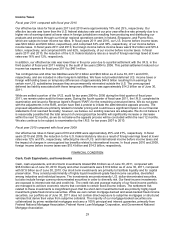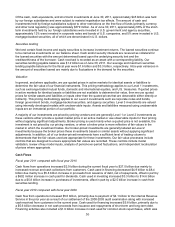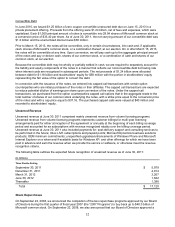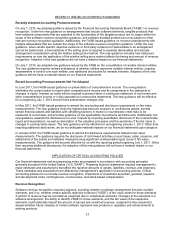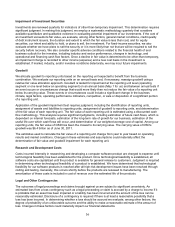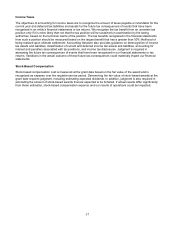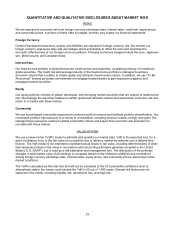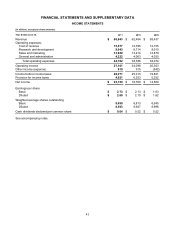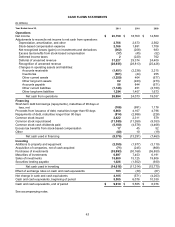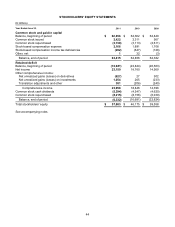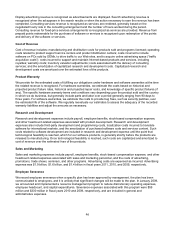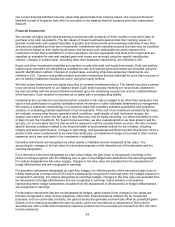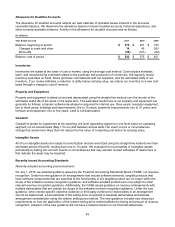Microsoft 2011 Annual Report Download - page 39
Download and view the complete annual report
Please find page 39 of the 2011 Microsoft annual report below. You can navigate through the pages in the report by either clicking on the pages listed below, or by using the keyword search tool below to find specific information within the annual report.
39
QUANTITATIVE AND QUALITATIVE DISCLOSURES ABOUT MARKET RISK
RISKS
We are exposed to economic risk from foreign currency exchange rates, interest rates, credit risk, equity prices,
and commodity prices. A portion of these risks is hedged, but they may impact our financial statements.
Foreign Currency
Certain forecasted transactions, assets, and liabilities are exposed to foreign currency risk. We monitor our
foreign currency exposures daily and use hedges where practicable to offset the risks and maximize the
economic effectiveness of our foreign currency positions. Principal currencies hedged include the euro, Japanese
yen, British pound, and Canadian dollar.
Interest Rate
Our fixed-income portfolio is diversified across credit sectors and maturities, consisting primarily of investment-
grade securities. The credit risk and average maturity of the fixed-income portfolio is managed to achieve
economic returns that correlate to certain global and domestic fixed-income indices. In addition, we use “To Be
Announced” forward purchase commitments of mortgage-backed assets to gain exposure to agency and
mortgage-backed securities.
Equity
Our equity portfolio consists of global, developed, and emerging market securities that are subject to market price
risk. We manage the securities relative to certain global and domestic indices and expect their economic risk and
return to correlate with these indices.
Commodity
We use broad-based commodity exposures to enhance portfolio returns and facilitate portfolio diversification. Our
investment portfolio has exposure to a variety of commodities, including precious metals, energy, and grain. We
manage these exposures relative to global commodity indices and expect their economic risk and return to
correlate with these indices.
VALUE-AT-RISK
We use a value-at-risk (“VaR”) model to estimate and quantify our market risks. VaR is the expected loss, for a
given confidence level, in the fair value of our portfolio due to adverse market movements over a defined time
horizon. The VaR model is not intended to represent actual losses in fair value, including determinations of other-
than-temporary losses in fair value in accordance with accounting principles generally accepted in the United
States (“U.S. GAAP”), but is used as a risk estimation and management tool. The distribution of the potential
changes in total market value of all holdings is computed based on the historical volatilities and correlations
among foreign currency exchange rates, interest rates, equity prices, and commodity prices, assuming normal
market conditions.
The VaR is calculated as the total loss that will not be exceeded at the 97.5 percentile confidence level or,
alternatively stated, the losses could exceed the VaR in 25 out of 1,000 cases. Several risk factors are not
captured in the model, including liquidity risk, operational risk, and legal risk.


